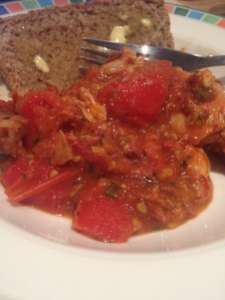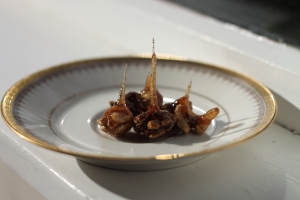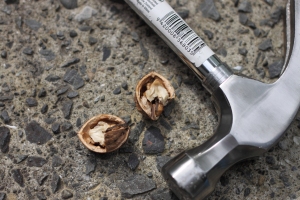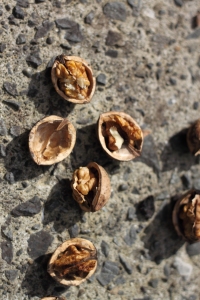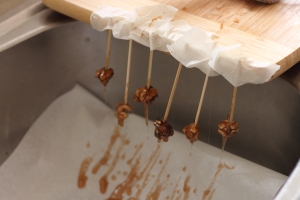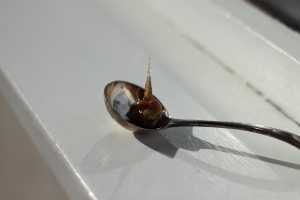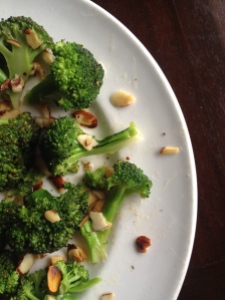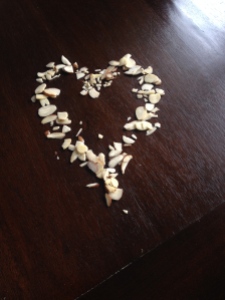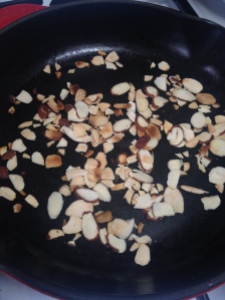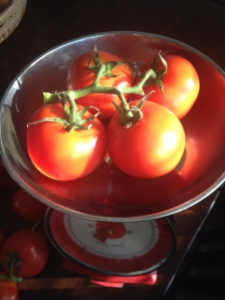
Bacon, chicken, red wine…what’s not to love?
Forgive my absence; I’ve been on a food writing course at the weekends over May and June, which has taken up all of the food writing time in my life.
I’m back with a vengeance however, and with a few new bits and pieces for Lick Your Plate. This post dedicated to Pollo alla Romana, or Roman Chicken, stems from a class exercise on re-writing classic recipes in one’s own style.
I have to say I had not heard of Pollo alla Romana before this little adventure, but reliable sources, especially the lovely Rachel Eats blog which is all about eating and living in Rome (jealous much?), pit it as a Roman classic.
And I say jealous much because I fell totally and utterly in love with Rome when I was lucky enough to visit, and this love made Pollo Alla Romana jump out at me as a suitable classic to tinker with.
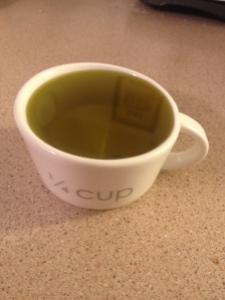
To make my version of Pollo Alla Romana you will need:
- 1 x whole chicken, cleaned and cut into 8 pieces
- 1/4 cup olive oil
- 50 grams pancetta or streaky bacon
- 4 cloves of garlic, chopped
- 1/2 teaspoon salt
- Ground pepper
- 1/2 cup dry white wine
- 600 grams fresh tomatoes, chopped (save the juice!)
- 3 red bell peppers, de-seeded and cut into chunks
- 2 tablespoons Italian flat-leaf parsley, chopped
Yikes, was my first thought, a whole chicken cut into pieces? Yes indeed, and with the help of Chef Tony and his YouTube clip, let me assure you it can be done. It’s a little brutal and if you’re inexperienced in such things like I am, there’s quite a bit of wrenching and cracking.
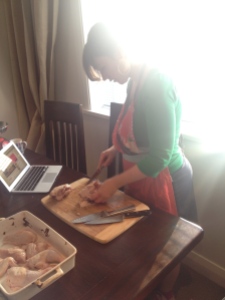
Heat the oil in a heavy pan with a lid. The one featured is known in my household as ‘The UFO’ on account of its similarity to a flying saucer when it has its lid on and is perched on the kitchen shelf.
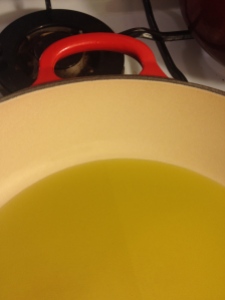
Brown the chicken pieces in the pan, doing this in batches if you need to. Remove them and set aside.
Add the pancetta or bacon to the pan, stirring to stop it sticking and to scrape up any of those delicious meaty bits that stick to the bottom.
When the pancetta or bacon becomes fragrant and releases its fat, add the garlic and cook for five minutes.
Pour in the wine and let it bubble up, then add the tomatoes with their reserved juice and the peppers and cook for about five minutes until they start to soften.
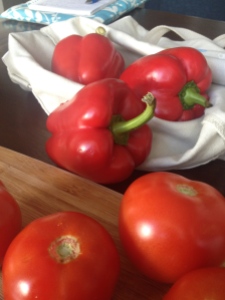
Return the chicken to the pan (it will look full!), season with the salt and ground black pepper as suits your tastes and place the lid on the pan, leaving it slightly ajar.
Turn the heat right down and simmer gently, giving the pan a stir from time to time to ensure nothing sticks. It is ready when the sauce coats the back of a spoon – about 45 minutes.
Stir in the chopped parsley and serve. We had ours with large hunks of fresh wholemeal bread and it was a suitably hearty winter fare. Pasta, polenta, or the less Italian mashed potato, would be suitable partners too in my opinion.
Buon appetito readers.
